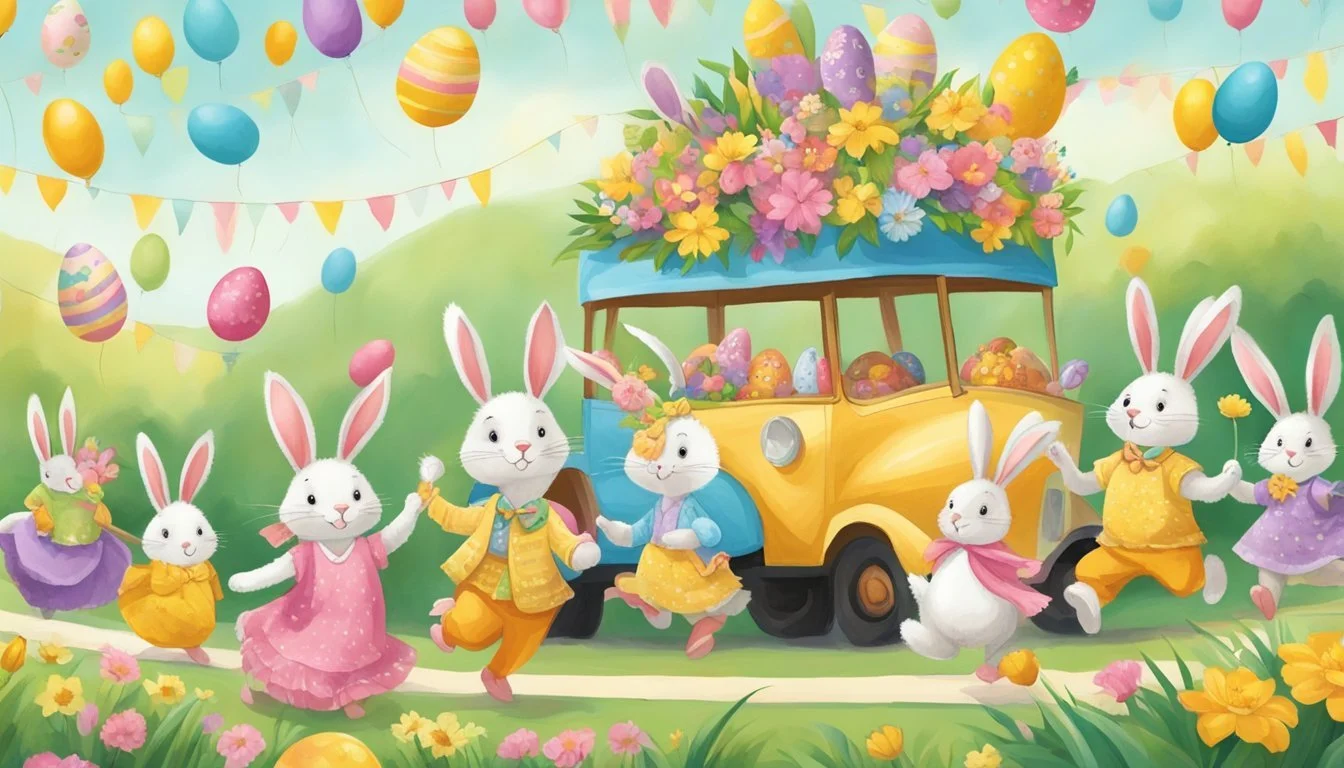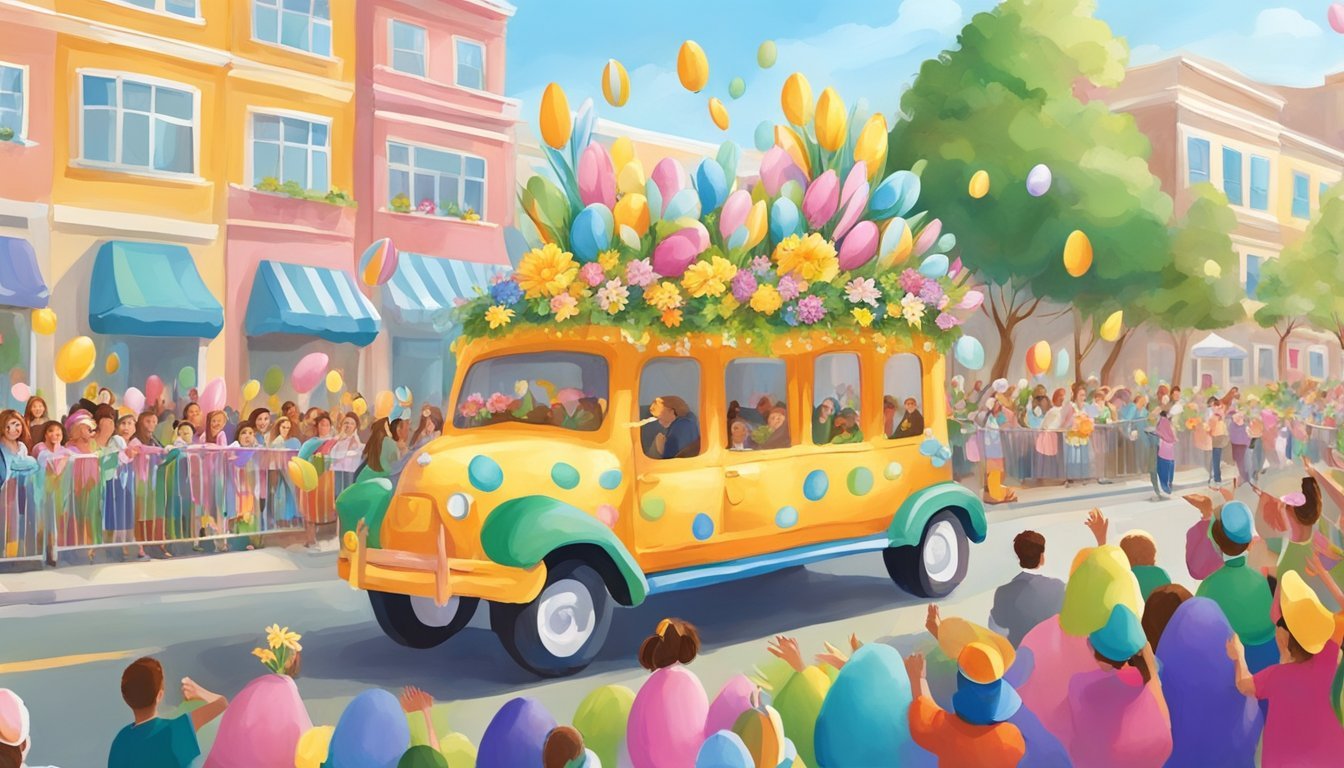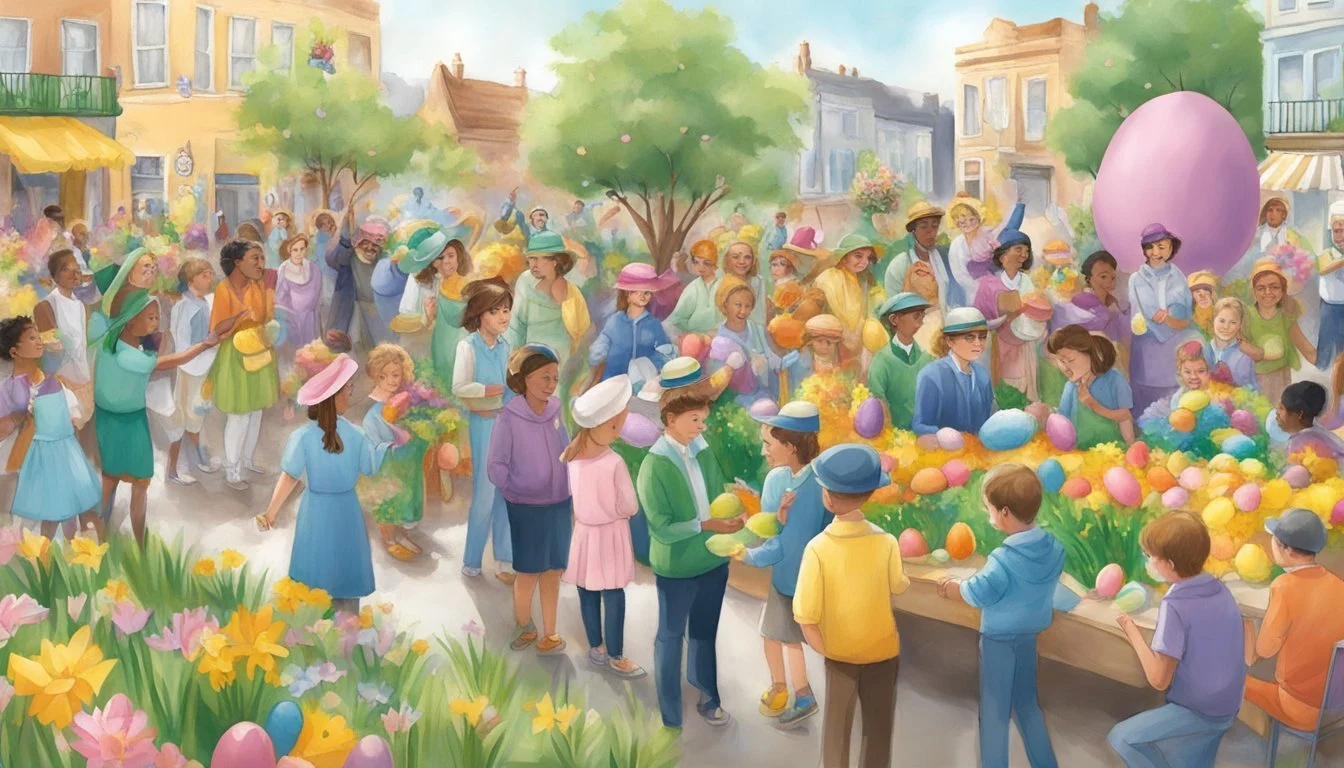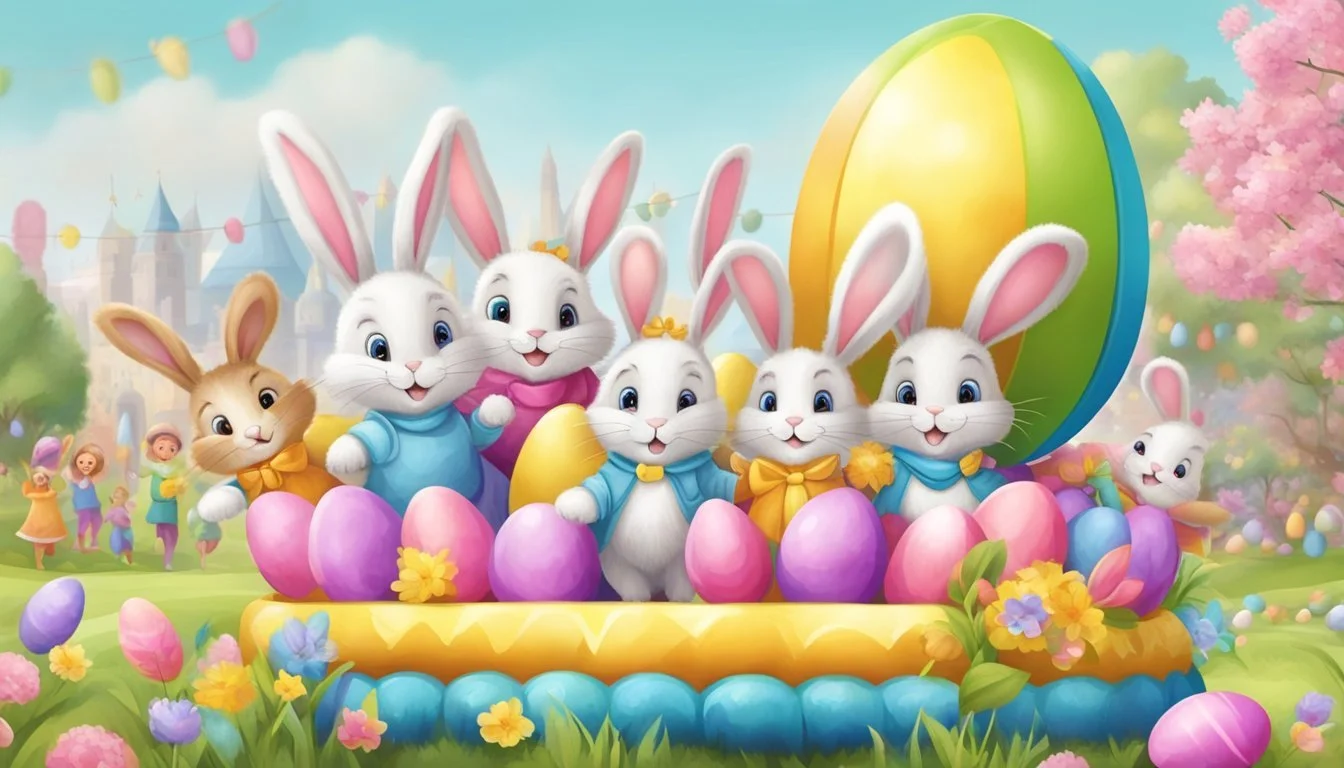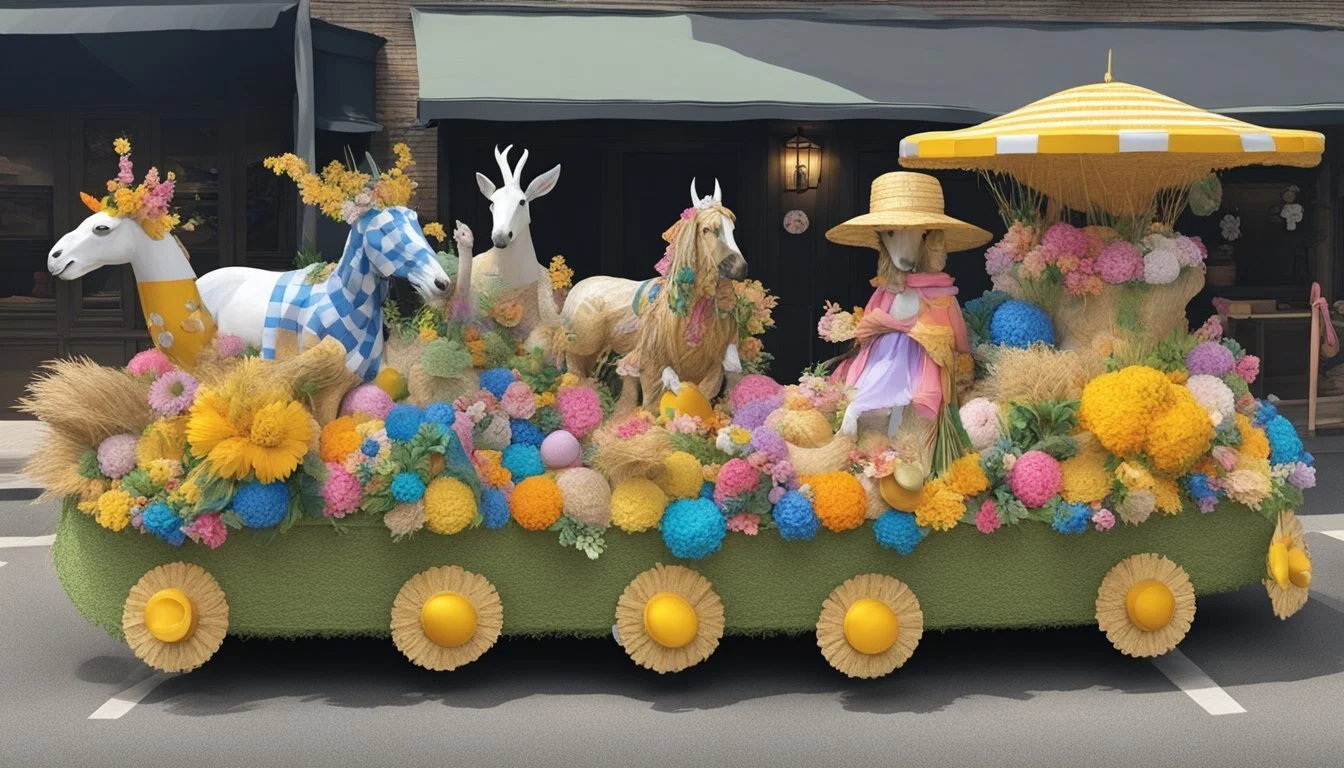Country Easter Parade
DIY Float and Costume Ideas to Celebrate in Style
Easter parades are a cherished tradition celebrating the arrival of Spring and the joy of Easter, with local communities coming together to showcase their creativity and community spirit. A standout feature of these parades is often the homemade floats and costumes that parade-goers painstakingly craft to express their festive joy. These floats serve not only as a focal point of the parade itself, but they also spark inspiration and bring delight to all who view them.
Creating a float for a country Easter parade offers an opportunity to blend rustic charm with seasonal themes. Using readily available materials such as chicken wire, tissue paper, and plywood, individuals can construct eye-catching displays that embody the essence of Easter and rural life. These materials allow for imaginative shapes and characters to take form, from giant Easter bunnies to intricately designed eggs, woven into the structure of the floats. Meanwhile, attendees in carefully thought-out costumes can add to the visual narrative, integrating traditional Easter symbols and pastel hues that mirror the season's palette.
The process of building a parade float or crafting costumes can become a bonding activity for families, groups, and entire neighborhoods, encouraging people of all ages to contribute their ideas and skills. It's a collective effort that not only strengthens community ties but also results in impressive, memorable contributions to the local parade. Whether it's through the clever use of budget-friendly decorations from dollar stores or sporting handmade attire, each participant plays a role in bringing the Country Easter Parade to vibrant life.
Planning Your Country Easter Parade Float
When crafting a Country Easter Parade float, it's imperative to hone in on a theme that resonates with the community while also staying true to the festive occasion. Creative expression and a keen eye for design can lead to a memorable parade experience.
Understanding the Theme and Audience
To create a successful parade float for a Country Easter Parade, one must first consider the target audience, which typically includes families and individuals of all ages from the local community. The float design should embody the spirit of Easter and, if pertinent, reflect any specific themes or causes championed by the parade organizers. Working within the context of rural traditions can add authenticity and appeal to the float.
Selecting Your Design Outline
Once the theme is grasped, the next step is to formalize a design outline that captures the essence of the occasion. One may choose to depict scenes or symbols associated with the holidays, such as Easter eggs, bunnies, or springtime flora. It's important to ensure that the float's design is visible and engaging from all angles for maximum impact. Sketching the proposed float design can provide a clear roadmap for the construction phase.
Sourcing Materials from Nature and Hardware Stores
Creating a parade float with a touch of nature can involve sourcing materials from the surrounding environment—using flowers, hay, and branches to construct pastoral scenes. Hardware stores can also supply basic construction materials, such as chicken wire and tissue paper for making larger-than-life Easter icons. By integrating natural elements, the float not only becomes more sustainable but also echoes the country theme. Here's a simplified list of materials that might be utilized:
Natural Materials:
Flowers and leaves
Hay bales
Twigs and branches
Hardware Supplies:
Chicken wire (for structure)
Tissue paper (for decoration)
Paint and fabrics (for color and texture)
Each element chosen should contribute to a cohesive design, ensuring the float tells a story that resonates with the parade's spectators and honors the holiday's traditions.
Building a Parade Float
Creating an eye-catching parade float involves a systematic approach to construction and decoration. It requires selecting solid base materials such as trailers and plywood, as well as choosing decorative supplies like tissue paper or construction paper to add flair and color to your design.
Step-by-Step Parade Float Construction
Select a Trailer: Choose a sturdy trailer appropriate for the parade route. This trailer will serve as the base for the float.
Construct a Base: Outfit the trailer with a plywood box base. Ensure that it is secure and able to support the weight of your decorations.
Frame with Chicken Wire: Using chicken wire, create a frame to shape the float's design elements, such as stars or other symbols relevant to the Easter theme.
Safety Checks: Before moving on, inspect the construction to ensure that everything is stable and secure.
Parade Float Decoration Tutorial
Gather Supplies: Assemble decorating materials such as tissue paper in various colors, scissors, construction paper, and scotch tape.
Materials Needed Quantity Tissue Paper As Needed Scissors At least 1 pair Construction Paper Several sheets Scotch Tape 1-2 rolls Chicken Wire Dependent on design
Tissue Paper Application: Cut tissue paper into squares and use them to stuff the holes in the chicken wire, mixing colors for a vibrant look.
Adding Details: Use construction paper to make additional decorative features that complement the Easter theme, such as eggs or bunnies.
Finishing Touches: Lastly, add fringe or other elements that give the float a polished and professional appearance.
DIY Costume Creations
Creating costumes for a Country Easter Parade blends tradition with the joy of DIY craftsmanship, allowing participants to showcase their creativity while celebrating the holiday. Homemade costumes can range from simple to elaborate designs, and the use of accessible materials makes the project fun for adults and children alike.
Easter-Themed Costume Ideas
Easter provides a rich tapestry of themes and symbols from which to draw inspiration for costumes. Children often enjoy dressing up as Easter bunnies or chicks, incorporating pastel colors and spring motifs into their designs. Schools and community groups can aid in sourcing materials and fostering a creative environment for costume creation. Here are some common costume ideas:
Bunny Costume:
Ears: Crafted from felt and a headband
Tail: A pom-pom attached to the outfit
Chick Costume:
Body: A yellow shirt with feathers glued on or a feathered boa
Beak: Orange felt cut and attached to a cap
Adults and older children may opt for more complex designs, like flowers or Easter eggs, utilizing a variety of textiles and embellishments.
Utilizing DIY Resources
Leveraging everyday resources is key to a successful DIY costume endeavor. Households and local schools often have an array of materials on hand that can be repurposed creatively. Recommended DIY resources include:
Fabric scraps: For making appliques and accessories
Old clothes: To transform into costumes with minor adjustments
Cardboard: For creating structured elements like eggshells or bunny houses
The use of these materials not only promotes sustainability but also encourages participants to employ their inventiveness, resulting in unique and personal costume interpretations for the Country Easter Parade.
Lighting and Special Effects
In any parade, lighting can dramatically enhance the float's visual appeal, while DIY special effects bring a dynamic edge to the display. Strategically utilized, both elements can transform a Country Easter Parade float into a captivating spectacle.
Incorporating Christmas Lights
Christmas lights are not just for the holiday season; they can provide a versatile and affordable solution for float illumination. For a Country Easter Parade, incorporating these lights can add a twinkling, festive touch. They should consider:
Vehicle Integration: Ensure that the vehicle pulling the float has a power source to support the light strands. One can use inverters to convert the vehicle's DC power into AC power, enabling the use of traditional Christmas light strings.
Safety Checks: It's imperative to check all lights for damage and ensure they're suitable for outdoor use. This avoids potential electrical hazards.
Idea Execution:
Outline shapes: Use lights to outline the silhouette of a Christmas tree or other Easter-themed figures on the float.
Create depth: Layer lights behind translucent materials for a soft, diffused glow.
Motion: Opt for chasing lights to simulate movement and draw attention.
DIY Special Effects Techniques
Special effects crafted through DIY techniques can be a creative and cost-effective approach to adding magic to parade floats. One can employ various materials and simple mechanics to achieve impressive results:
Illusions: Use mirrors strategically placed to reflect light and create depth or the illusion of space where there isn't any.
Movement: Introduce kinetic elements such as rotating signs or waving figures, driven by simple motor systems.
Technique Implementation:
Handcrafted Elements: Construct Easter-themed shapes such as bunnies or eggs, integrating mechanics to animate them.
Light Diffusion: Experiment with different materials to diffuse lights, such as tissue paper or light cotton, which can softly illuminate characters and decorations.
Safety and Legal Considerations
When planning a float for a Country Easter Parade, it's crucial to address safety and operational regulations dictated by local authorities. Compliance ensures a secure event for both attendees and participants.
Navigating Parade Route Regulations
The parade route often comes with specific guidelines set forth by the community or organizing committee. Participants must be informed of these requirements:
Permits: Ensure all necessary documentation has been obtained to legally occupy the public space.
Route Compliance: Adhere strictly to the designated parade route, avoiding deviations unless directed by officials.
Barricade Adherence: Respect all barricades and signs, which are established for community safety.
Neighborhood Notifications: Inform the neighborhood of the parade's timing and route to minimize disruptions.
Safety Measures for Participants
Organizations are responsible for implementing proactive safety measures for all individuals involved in the parade.
Minimum Age Requirements: Verify age restrictions for participants, especially those operating or riding on the float.
Training: Provide proper training for drivers pulling floats, ensuring safe navigation during the parade.
Vehicle Safety: Confirm all vehicles and floats are in good working condition and do not pose risks.
Emergency Plan: Develop and communicate a clear emergency plan that covers potential incidents.
Simple precautions and careful planning can significantly contribute to a successful and safe parade experience for everyone involved.
Community Involvement and Collaboration
A Country Easter Parade thrives on the collective efforts of its community members. Collaboration among schools, organizations, and neighborhood groups ensures a vibrant and inclusive event that champions a common cause.
Working with Schools and Organizations
Schools play a crucial role in fostering community spirit and involvement. They can collaborate by:
Crafting Educational Floats: Classes can design and construct parade floats that reflect their curriculum, such as history or literature, promoting education through art.
Student Performances: School bands and cheer squads can provide live entertainment, adding a dynamic element to the parade.
Organizations, on the other hand, may support the parade by:
Hosting Workshops: Local arts and crafts organizations can host float-building workshops to teach and engage participants in creating their floats.
Sponsorship: Businesses and nonprofits can sponsor floats or costumes, offering financial or material support for the event.
Engaging the Neighborhood
Neighborly involvement is essential for a successful parade. Here's how a neighborhood can engage:
Neighborhood Committees: Establish committees responsible for different parade aspects—such as logistics, promotions, and safety—to organize and streamline tasks.
Volunteer Participation: Local residents can get involved through volunteering for a range of roles, from marshaling the parade to judging costume contests.
In essence, bringing schools, organizations, and neighborhood groups together cultivates a sense of unity and shared purpose essential for an impactful Country Easter Parade.
Seasonal Parade Float Ideas
Creating a parade float that captures the spirit of a season or holiday is a memorable way to engage with the community. Each occasion presents unique opportunities for creativity and festivity.
Homecoming and Independence Day
For homecoming parades, schools and communities often highlight their local pride. A classic homecoming float could incorporate the school's colors and mascot, using materials like crepe paper, paint, and school banners. Balloons and streamers in the school colors can add movement and festivity to the display.
During Independence Day celebrations, parade floats can pay homage to national pride with red, white, and blue motifs. A DIY American flag made of fabric or paper can serve as a backdrop, while handmade stars and stripes bunting can outline the float. Incorporating symbols like the Liberty Bell or a miniature Statue of Liberty can enhance the patriotic feel.
Use bold colors symbolic of the event
Consider adding a papier-mâché mascot for homecoming
For the Fourth of July, incorporate firework designs using reflective materials to mimic sparkles
Halloween and Christmas Float Concepts
Halloween parade floats can range from spooky to fun, featuring jack-o'-lanterns, witches, and ghosts, or friendly characters for a more child-friendly approach. Construction can be simple, with materials like cardboard, paint, and fabric to create silhouettes and figures. Glowing elements using LED lights can make the float stand out in evening parades.
When Christmas comes around, the parade float idea can transform into a winter wonderland. A DIY Christmas lights vehicle parade float can stand out with its twinkling lights outlining the shape of the float. A three-dimensional sleigh or reindeer can add depth, while artificial snow and evergreen branches can create a festive atmosphere.
Utilize orange and black for Halloween themes with accent lighting
For Christmas, consider a table illustrating various float elements:
Element Suggested Material Effect Reindeer Wood, brown felt Adds a classic Christmas character Sleigh Cardboard, red paint Serves as a central piece of the display Snow Cotton batting Creates a snowy texture Christmas lights LED string lights Provides illumination and charm
In the creation of floats for each occasion, the key is to celebrate the unique aspects of the holiday while ensuring safety and visibility for the parade audience.
Decoration Techniques and Materials
When decorating a parade float for a Country Easter Parade, one can achieve a festive look by utilizing tissue paper and fringe for volume and texture, and by incorporating creative signage and symbols for thematic expression. These materials are versatile, cost-effective, and can make a float stand out.
Working with Tissue Paper and Fringe
Tissue paper is a staple in float decoration for its wide color range and ease of use. One can create vibrant effects by stuffing tissue paper into chicken wire to form colorful patterns or shapes. The technique involves:
Cutting tissue paper: Sheets are cut into squares roughly 5 inches on each side.
Stuffing technique: Each square is then shaped into a point at the center and stuffed into the chicken wire holes, creating a plush surface.
Similarly, fringe offers a dynamic look and is an essential element for adding texture to a float. It can be used to underline the main design, or as a skirting around the base.
Creating fringe: Fringe can be made by cutting strips of tissue paper or metallic material, ensuring a consistent width.
Application: Fringe is then either glued or taped along the edges of the float or used to hang from the sides for a finished edge.
Creative Signage and Symbols
Signs and symbols are crucial for conveying the theme of the float. They should be bold and readable, and they can be made from materials like cardboard, foam board, or wood. Here's how to create effective signs:
Designing signage: One first sketches out the sign design on paper or a computer program, focusing on visibility and readability.
Constructing signs: The design is then transferred to the chosen material, cut out, and painted or decorated to match the float's theme.
To create symbols that resonate with the Easter theme, designers may choose to craft shapes such as Easter eggs, bunnies, or flowers using similar materials and techniques. Each symbol should be proportionate to the float to ensure it is an integral part of the overall design. These decorations can be affixed to the float using strong adhesives or brackets, depending on their weight and size.
Final Touches and Presentation
Before a parade float takes to the streets, adding those final touches can differentiate a good float from a fabulous one. It's also vital to consider how to present the float effectively, ensuring it leaves a lasting impression on the community.
Adding the Finishing Details
A parade float's final details are what can bring the theme to life and make it stand out. For a Country Easter theme, details such as pastoral embellishments or Easter-themed decorations, like eggs and bunnies, are essential. One might choose to craft a gingerbread house to serve as the centerpiece of the float, with its edible-looking facades constructed from materials like cardboard and colorful paper. To add to the festivity, stringing together handmade stars and draping them across the float can create a whimsical night-sky backdrop that twinkles during the parade.
Showcasing Your Float to the Community
Showcasing a float effectively requires not only creative design but also strategic placement of elements for maximum visibility. If the float is targeting a younger audience, such as homemade parade floats for kids, it's important to ensure that interactive elements, like a hopscotch or simple games, are visible and accessible. The float should move through the parade route at a steady, deliberate pace, allowing onlookers to take in every detail—especially the ones that took extra effort and creativity. Engaging with the crowd through music or live performances on the float also keeps the community actively involved and entertained.
By taking care with the finishing details and considering the presentation, parade floats become more than just a craft—they turn into a memorable part of the community's celebration.


